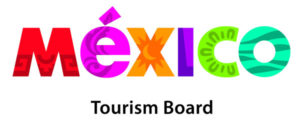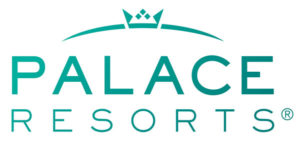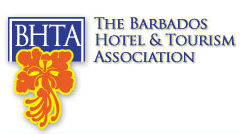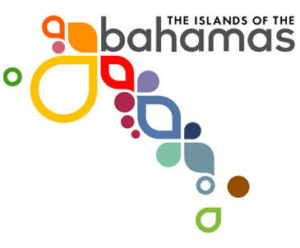by Guest Blogger, Tara Murney, WPICC, of The Bouquet House
A Traditional Irish Ceremony
The Irish have always had a lot of tradition incorporated into their weddings and I thought being of Irish decent, I would share some of my culture with all our beliefs and tradition that I think are not only important but a great part of my heritage. As passed from Nana to Mother, and Mother to Daughter, I now pass to you. Enjoy!
The tradition of Matchmaking was common in Ireland up into the 20th century and many localities had their own matchmaker. Very little was left to chance and few couples enjoyed a match based solely on love. Marriages between the landless and well-to-do were very uncommon. Families held tightly to their land and social status and tended to move within their respective economic circles. As well as lining up potential mates for men and women, the matchmaker assisted in negotiating a “dowry,” between the groom and bride’s father. A girl brought her dowry with her into the marriage.
Traditional Irish Superstitions
Let’s begin with one very popular wedding tradition, even regarded as an Irish superstition that states: ‘Marry in May and Rue the Day’ while another states: ‘Marry in April if you can, joy for maiden and for man’.
Here’s a list of other superstitions the Irish believe in; keep in mind it’s by no means complete…
- A fine day meant good luck, especially if the sun shone on the bride. If you’re a Roman Catholic, one way to make certain that it won’t rain is to put a statue of the Infant of Prague outside the church door on the wedding morning.
- It was unlucky to marry on a Saturday
- Those who married in harvest would spend all their lives gathering
- A man should always be the first to wish joy to the bride, never a woman
- It was lucky to hear a cuckoo on the wedding morning, or to see three magpies
- To meet a funeral on the road meant bad luck and if there was a funeral procession planned for that day, the wedding party always took a different road
- It was bad luck if a glass or cup were broken on the wedding day
- A bride and groom should never wash their hands in the same sink at the same time — it’s courting disaster if they do
- It was said to be lucky if you married during a growing moon and a flowing tide
- When leaving the church, someone must throw an old shoe over the bride’s head so she will have good luck
- Its bad luck if newly-weds don’t meet a man on their way home from the church
- If the bride’s mother-in-law breaks a piece of wedding cake on the bride’s head as she enters the house after the ceremony, they will be friends for life
- At one time, the groom was locked inside the church on the wedding day in case he got cold feet!
- It’ true….It’s good luck if it rains on your wedding day. (Of course, in Ireland, it would be a rare day when a little rain didn’t fall…)
- It’s good luck to rise with to the song of birds on your wedding day.
- It’s bad luck to put on your own veil; have a well-married woman do the honors.
- A bride who can sing well is expected to sing at the wedding.
- An Irish bride uses a different road home than she took to the church. This may have been started to frustrate merrymakers intending on delaying the honeymoon, but it is also a symbol of her new life that begins with her marriage.
- Your wedding earrings will always bring you luck when you wear them.
- The bride shouldn’t take both feet off the floor when dancing with her new husband. It gives the fairies an edge.
When the Irish Marry
Each culture has its own traditions for uniting lovers in matrimony. The Irish are no exception. Everyone looks forward to “a day out,” which is Celt-speak for the wedding reception. There is plenty of conflicting information with respect to the best time of year for marriages. History shows that up until fairly recently, marriages were unheard of during Lent, the forty days between Ash Wednesday and Easter Sunday.
The old Celtic calendar, which corresponds with the natural cycle of the year states that marriages were ill advised during the “dark half” of the year. The dark half commenced on November 1 and continued until Beltane or May 1st known as May Day. You’ll find that literature tends to see the feast of Beltane as an auspicious time for a wedding, conflicting sources claim that even though May Day and Beltane are wonderful times for finding a mate or “courting,” the earth was often considered to be to “in flux” to bolster such a strong commitment of vows. Lughnasadh, another very important day on the old calendar and falling on August 1st, was considered by many to be the most auspicious day of the year for weddings. However, any time during the “light” half of the year (May 1 to October 31) was considered an acceptable time to marry. Today, people marry all year round. However, if you are looking for “powerful” days on the Celtic calendar to marry, here is a list compiled of the four fire festivals and the equinoxes and solstices.
- Samhain (Halloween) October 31
- Imbolc (St. Bridgit’s Day) February 1
- Beltane (May Day) May 1
- Lughnasadh August 1
- Summer Solstice – June 21
- Winter Solstice – December 21
- Spring Equinox – March 21
- Autumnal Equinox – September 21
An Irish Proposal
There are many ways in which to ask your lady to wed but the Irish have two very well known proposals and they read:
“Would you like to be buried with my people?”
“Would you like to hang your washing next to mine.”
The Claddagh Ring and It’s History
The Claddagh Ring has been named after one of Ireland’s oldest fishing villages, Claddagh . It is located just outside the walls of Galway City where the Corrib River meets Galway Bay. These rings have been in use in Ireland, particularly in County Galway, for several hundred years. Rumor has it that the very first Claddagh ring is believed to have been crafted by the blacksmith Richard Joyce around 1690. At first, it became very popular in Joyce’s local village of Claddagh and around County Galway, but later gained popularity throughout the county.
Today, you can spot Claddagh rings all around the world. The Claddagh ring was often passed down as a heirloom from mother to daughter. It can serve as an engagement ring or a wedding ring or both. It is designed with a heart at the center, a hand either side of the heart and a crown on top. The heart is of course the symbol of love. The hands on either side represent friendship and the crown represents loyalty and fidelity. The manner in which the ring is worn has a symbolism all its own. If worn on the right hand or with the heart facing away from your heart – it means that you are free to love. If worn on the right hand with the heart facing inwards towards your heart – it means your “heart is taken.” If worn on the left hand facing in – it means you have committed your life to another forever.
Many couples express their Irish heritage in a very profound way by having “Claddagh” rings as their wedding band of choice. This Irish design can be used as a theme for the entire wedding from start to finish. Many couples use the symbol of the Claddagh wedding rings, the design can be used on invitations, the wedding programs and thank you cards. If you shop around you will find Claddagh vases that can be used for centerpieces and chocolate boxes with the Claddagh symbol serve as favors. Even certain cake dà©cor carry a symbol of the Claddagh which can be placed up atop your wedding cake.
Choosing Color for an Irish Wedding
Irish Tradition states:
Marry in white, everything’s right
Marry in blue, lover be true
Marry in pink, spirits will sink
Marry in grey, live far away
Marry in brown, live out of town
Marry in green, ashamed to be seen
Marry in yellow, ashamed of your fellow
Marry in black, wish you were back
Marry in red, wish you were dead
Marry in tan, he’ll be a loved man
Marry in pearl, you’ll live in a whirl
Traditional Irish Dress (Linen or Lace)
As far back as the 16th Century, the Irish started producing lace. It was at the turn of the 20th Century the “white gown” came about and it was often accentuated with Irish lace, a form of crochet lace that was regarded as a couture profession. Crochet Centers were set up all over Ireland by the Ursuline Sisters in order to provide employment during the famine. History documents the first center was started in 1845 in Blackrock, County Cork. Soon, the couture lines of London, New York and Vienna sought out “Irish Lace,” for the fashions of the day. Irish Lace was used to make dresses and to decorate blouse bodices and cuffs, trimmings and ruffles. To this very day, many brides will add Irish lace to their wedding gowns. Brides will carry what is known as an Irish lace hanky.
It was during the Victorian Era that the favored color became white and became a tradition which spread from Victorian England around the world. Until that time, other pastel shades were favored in England such as yellow and blue.
Oriental cultures have a love for the color red on their wedding day. They solely believe it will bring good luck to the bride and groom; the traditional old Celtic cultures often favored blue and other bright colors for the same reason. The only color the Irish avoided was Green. It has been said to entice the fairies, who love to own beautiful things which would include the bride of course.
Traditional Irish Ceremony
There is a popular Irish vow that reads:
By the power that Christ brought from heaven, mayst thou love me. As the sun follows its course, mayst thou follow me. As light to the eye, as bread to the hungry, as joy to the heart, may thy presence be with me, oh one that I love, ’til death comes to part us asunder.
Traditional Irish couples will include an old Irish proverb that states: Don’t walk in front of me, I may not follow. Don’t walk behind me, I may not lead. Walk beside me and just be my friend.
Of course no wedding was complete without Pipers. Pipers play as guests arrive or after the ceremony the piper could pick up the recessional tune and continue it outside as guests leave. Many couples currently have them play as your guests arrive at the reception and when you both make your entrance. NOTE: But make sure the piper(s) plays “Uillean” pipes, known as Irish pipes, which are very different from Scottish bagpipes, they tend to be a little softer than the Scottish pipes.
Following tradition, Irish dancers should be invited to any Irish wedding. They’re ceremonial dress offers much color and tradition, years ago the were only present during the reception period but these days they are invited to hand out programs during the ceremony then invited to the reception to dance throughout the night.
Centuries back, many Irish brides wore a wreath of wildflowers in their hair and they also carried them in bouquets for luck. In Wales, brides carried live myrtle and gave a sprig to each bridesmaid which they were to plant. They believed that if it grew, the bridesmaid would marry within the year. Currently, many Irish couples have the florist add a sprig of shamrock to the bride’s bouquet and to the groom’s boutonnià¨re for good luck. Many Irish brides favor wildflower wreaths over these elaborate veils nowadays …and also carry wildflower bouquets. The Irish also favor Lavender and a flower called Bells of Ireland.
A Traditional IrishWedding Party
It has been told that the wedding party should always take the longest road home from the church. Years ago, the wedding party was generally celebrated at the home of the bride.
The wedding party surrounds the bride and groom after filling their glasses with mead (or champagne) the newly wedded couple recites an Irish toast: “Friends and relatives, so fond and dear, ’tis our greatest pleasure to have you here. When many years this day has passed, fondest memories will always last. So we drink a cup of Irish mead and ask God’s blessing in your hour of need.” The guests respond: “On this special day, our wish to you, the goodness of the old, the best of the new. God bless you both who drink this mead, may it always fill your every need.” Modern Irish weddings may opt to use this Irish toast and place cards on each table so that the guests may respond.
Traditional Irish Reception
Known as “Strawing” a wedding, it was said to be very lucky if the straw boys came and danced at your wedding. While there are several different versions of how they came into existence, I seem to favor the story of young men who were being chased because they were rustling the landowner’s sheep would sneak into a wedding reception and mingle with the guests. Eventually, it became a tradition for friends of the groom to disguise themselves with straw masks and suddenly show up.
Known as the “Jaunting Car”, men of the bridal party would hoist the groom in a chair and parade him around as a newly married man.
As for traditional Irish music, there’s so much wonderful Irish music available today, you’ll have no problems in finding appropriate selections for both the ceremony and the reception. The difficulty will be in deciding which pieces to play considering the night won’t be long enough to play it all. There are many Irish bands out there that focus on the old traditional music if this is an option for you.
Bunratty Meade is a honey wine, it’s from a recipe based on the oldest drink in Ireland and if you’ve never tasted it, it’s well worth trying. In the old days, it was consumed at weddings because it was thought that it promoted virility. They say if a baby was born nine months after the wedding, it was attributed to the mead! Couples also drank it from special goblets for a full month following the wedding, which is supposedly where we get the word honeymoon. This was to protect the couple from the fairies coming to take the bride away.
In the old days, there was an old ancient custom that had the couple eat salt and oatmeal at the beginning of their reception. They would each take three mouthfuls as a protection against the power of the evil eye. Also, when a couple is dancing, the bride can’t take both feet off the floor because the fairies will get the upper hand. Fairies love beautiful things and one of their favorites is a bride. There’s many an Irish legend about brides being spirited away by the little people! For the same reason, its bad luck for a bride to wear green as stated above. Relatives will tell you it’s also bad luck for anyone to wear green at an Irishwedding – but I think it really only applies to the bride. It’s also bad luck for a bride or the groom to sing at their own wedding; traditionally speaking.
Traditional Irish Dinner
If you are opting for a traditional Irish themed wedding your meals may include any or all of the following….
Your appetizers should include:
- Soda bread with a Cheese Selection
- Smoked Salmon upon Irish Brown Bread (don’t forget to include chopped purple onion, capers, mayonnaise and cream)
Your starter could be:
- Irish Potato and Leek soup
Your traditional Irish main course should be:
- a potato dish known as Colcannon
- Melon & Avocado Salad
- Potato Rolls (yum yum)
- Salmon en Croute (basically salmon in any shape will do)
- Known for the brave…. Shepard’s Pie or Beef stew
Your traditional Irish dessert could be any or all of these:
- Soda bread served with a selection of jams
- Chocolate Dipped Strawberries
- Wedding Cake
- White Cake with Strawberry filling
- Irish wedding cake (rich fruit cake iced in white)
- Fresh cream
Traditional Irish Drinks:
- Mead (of course)
- Irish Coffee or for the brave: Triple Irish Coffee
- Apple Cider
- Hot Irish Nut
- Mulled Wine
- Black Velvets
- Warm Whiskey
Traditional Irish Toasts and Blessings
“Slainte,” pronounced SLAWN-cha, is a popular Irish toast. There are many others (too many to list )maybe not as popular but defiantly traditional, here is another one dedicated to the new couple:
Long live the Irish!
Long live their cheer!
Long live our friendship, year after year!
Traditional Irish Gifts
The chime of bells is said to remind a couple of their wedding vows and this is why giving a bell as a gift has become an Irish tradition.
Salt and pepper shakers are a lucky gift.
Wine glasses are lucky as well, though now these days it’s more common to see very tall toasting flutes.
One thing that has always been certain at any Irishwedding new or old, is that there will be some Waterford Crystal and some Belleek Parian China. It’s inconceivable to start out married life without them. Same goes for having a bit of Irish lace and some fine linen tablecloths. In having these items at your wedding it represents a solid commitment to one another.
Other Interesting Customary Practices
There are many other customs such as the top tier of your wedding cake should be an Irish whiskey cake which is saved for the christening of your first baby. A slice of the cake is saved to be eaten on your first anniversary. Also, a bottle of champagne is saved from the reception so that it can be used to ‘wet the baby’s head’ at the christening.
Years ago, there was one strange custom where the groom was invited to the bride’s house right before the wedding and they cooked a goose in his honor. It was called Aitin’ the gander, most believe it has to be where we get the expression ‘his goose is cooked!’ The goose was traditionally stuffed with apple stuffing (yum yum).
The Lucky Horseshoe. Traditionally Irish brides used to carry a real horseshoe for good luck. (Turned up so the luck won’t run out). You can get porcelain horseshoes which most Irish brides carry these days, even one’s made of fabric which the bride wears on her wrist. Originally, this would have been made by a blacksmith. Today, most of these horseshoes are sown into the dress or added to the top of the cake. It’s very rare to see a metal one, usually they are made of plastic. This horseshoe tradition is also carried on into the home where it is placed over the door again turned up so the luck won’t run out. The horseshoe to the left is made by Belleek Pottery.
The Magic Hanky. This is one of the most delightful customs, it involves having the bride carry a special hanky that with only a few stitches it can be turned into a christening bonnet for the first baby. With a couple of snips it can be turned back into a hanky that your child can carry on his/her wedding day. Nowadays, finding these “magic Hankies” are hard, unless you’ve had one passed down or you could search any local Irish Gift Stores. Your best bet is to have a relative that lives in Ireland, ship one over if one cannot be found here.
The Make-up bells: The chime of bells is thought to keep evil spirits away, restore harmony if two people are bickering and also remind a couple of their wedding vows.
So here’s to all future couples…….I hope that during all the chaos of planning that you use timeless tradition to sweeten your celebration. To all those getting married from one Irish to the next I toast to you…
May your troubles be less,
And your blessings be more,
And nothing but happiness come through your door.







Beautiful. It’s like a fairy tale